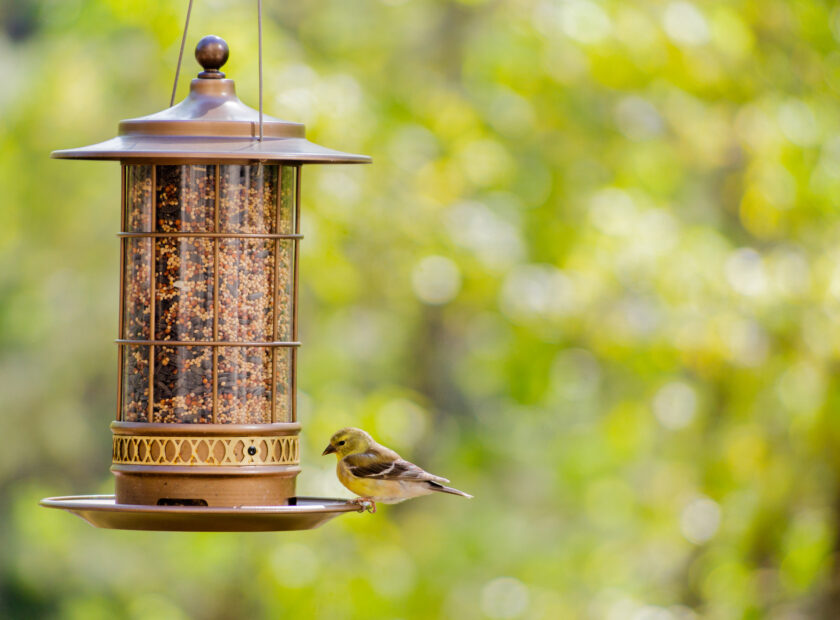Why you should feed wild birds

Many people enjoy feeding birds in their gardens, but what are the benefits of supplemental feed for wild birds?
During the Spring and Summer seasons bird will be busy preparing their nests, laying eggs, and once hatched care for and feed their chicks. Times of adequate or increased food availability can increase clutch sizes helping increase bird populations. But, periods of food shortage can occur at any time of the year. By feeding wild birds you can increase their chances of survival. Autumn and Winter are particularly difficult seasons for our wild birds. Birds need to continually forage to ensure they have enough food to build up and maintain adequate fat supplies to store on the body and ‘burn’ for energy. Food becomes more difficult to find for birds as we get into autumn and winter. Insects finish their lifecycles or go into hibernation, and plants are no longer producing berries, nuts and seeds.
The kinds of birds most likely to visit your garden feeders are farmland and woodland birds. Both of which have suffered greatly over the past fifty years. Looking at the smoothed trends from 1970 to 2018, they show a 57% decline in farmland birds, and a 27% decline in woodland birds. These are both significant declines, what is behind them?
Why the decline?
Looking at farmland birds the RSPB found that there was no single reason but multiple different factors that affected farmland species simultaneously. Some of the main factors driving the declines included firstly, a loss of mixed farming, this led to a loss of diverse habitats, and therefore less diversity of plants and animals, giving the birds less opportunity to forage throughout the year.
Secondly, the intensification of farming practices has meant we have seen use of pesticides increase. This leads to the reduction of insects and weed seed. There has also been changes in the way crops are grown, including a loss of spring crops. These would provide nesting habitat, and significantly less fields being left fallow over winter. Winter stubble is an important source of food for birds such as tree sparrows, yellowhammer, corn bunting, skylark and game birds.
Lastly, we have seen changes in the way grasslands are managed. This has led to a reduction in seeds and insects, and field sizes have increased. This has seen a reduction in hedgerows, and weedy field margins. These are both important habitats for birds to forage in.
There may be a similar story with woodland birds. Changes in land management around their woodland habitat, and a reduction in appropriate woodland management, including having woods of differing ages may be reducing the birds ability to access resources, and affecting their young’s ability to disperse to new areas as habitats become increasingly fragmented. We have seen increased urbanisation that has meant woodlands and other habitats are being lost to large-scale infrastructure projects to meet the growing population and their demands for housing, goods and services.
It is thought that increasing numbers of native and non-native deer may also be having an impact on woodland bird populations. Deer are browsing the understory of woodlands and changing their composition. Some woodland bird species are less likely to be found in woodlands browsed by deer over winter. This is possibly due to reduced shelter, loss of protection from predators and less feeding opportunities.
Feeding Wild Birds
As you can see above our wild birds have had a lot to contend with. Providing supplementary food in your gardens or on your site can give birds that use the feeders a chance to survive periods of food shortage. Especially during the harsh winter months. This is because they won’t have to spend as much time looking for food and expending important calories as the food will be readily available. If you are looking to feed wild birds ensure you are providing a good mix.
Different birds are attracted to different foods such as seeds, nuts, grains, fat balls and fruits. Don’t just rely on bird-feeders either. Sprinkle food beneath shrubs for ground feeding birds. Or, apply fat mixtures or 100% natural nut butter to branches or bark. This is to attract tree creepers, nuthatches or wood-peckers. Don’t forget to provide fresh water as well as some water sources may freeze over.
|